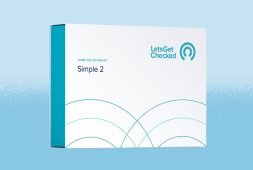New US Policy Set In Place Allowing The Seizure Of Patents of Government-Funded Drugs If Prices Too High

In recent news, the Biden Administration recently unveiled plans to exercise “march-in-right” by seizing patents associated with drugs and drug manufacturing procedures developed using government funding.
The introduction of this executive orders signifies a shift in approach, allowing government agencies to reevaluate and potentially redistribute patents, particularly when certain factors, such as escalating drug prices or limited affordability for a section of Americans, come into play.
A draft of the forthcoming law, as reported by Reuters, outlines the criteria for triggering these “march-in-rights.” Notably, the government will scrutinize situations where a medical condition contributes to rising drug prices or when only a fraction of the population can afford the medication.
This executive order marks a departure from past practices, as previous directors of the National Institutes of Health (NIH) have hesitated to exercise march-in-rights due to concerns about potential repercussions.
White House adviser Lael Brainard said on a press call, “We’ll make it clear that when drug companies won’t sell taxpayer funded drugs at reasonable prices, we will be prepared to allow other companies to provide those drugs for less.”
However, how much of taxpayers’ money is given to funding drugs? The Institute for New Economic Thinkingshowed that “NIH funding contributed to research associated with every new drug approved from 2010-2019, totaling $230 billion.”
The authors of the paper continued, “NIH funding also produced 22 thousand patents, which provided marketing exclusivity for 27 (8.6%) of the drugs approved [between] 2010-2019.”
The fundamental flaws in the current drug discovery and production landscape in the United States have prompted this bold move by the Biden Administration. Bringing a new drug to market is an expensive and time-consuming process, often taking 5 to 10 years and costing billions of dollars.
This extended timeline and financial burden create a barrier that favors large pharmaceutical companies, leaving smaller, more innovative entities struggling to compete on a level playing field.
Moreover, the risk associated with the substantial investment in drug development means that a single failed drug can have severe repercussions for a company, leading to significant disruptions in business operations. To mitigate these risks, pharmaceutical companies resort to securing numerous patents on drugs and manufacturing processes. This practice, especially prevalent for drugs addressing rare or obscure diseases, essentially grants companies monopolistic control over pricing.
However, a potential avenue for change emerges when a pharmaceutical company can convince the NIH that a specific drug should be deemed a public health priority. In such cases, the government can provide substantial funding for the drug’s development, as illustrated in a recent research paper.
Addressing the escalating costs of drugs in America has spurred innovative solutions from market participants. Notably, billionaire investor Mark Cuban has ventured into manufacturing generic versions of patented drugsused to treat common diseases, seeking to introduce competition into the pharmaceutical landscape.



